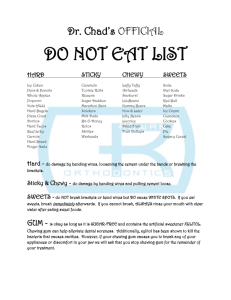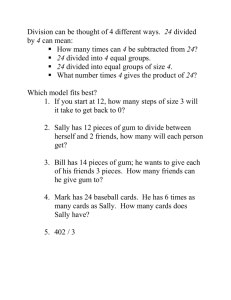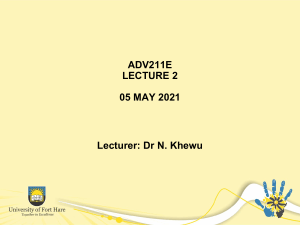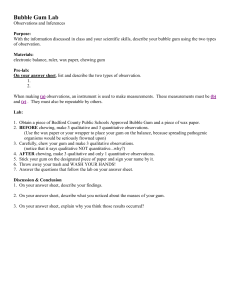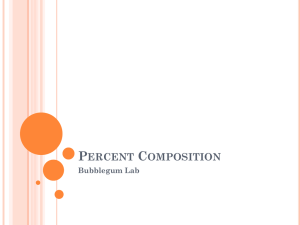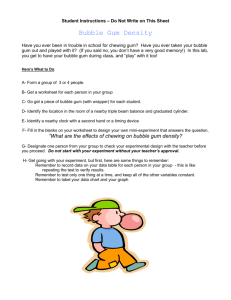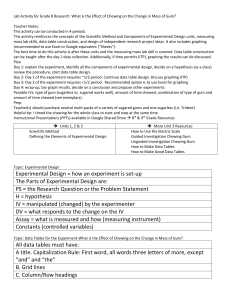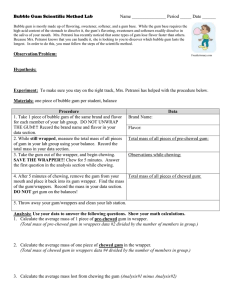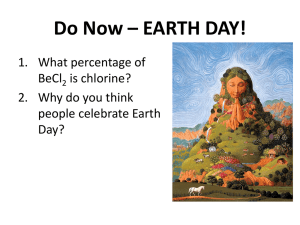Science Triple #3 - Spokane Public Schools
advertisement
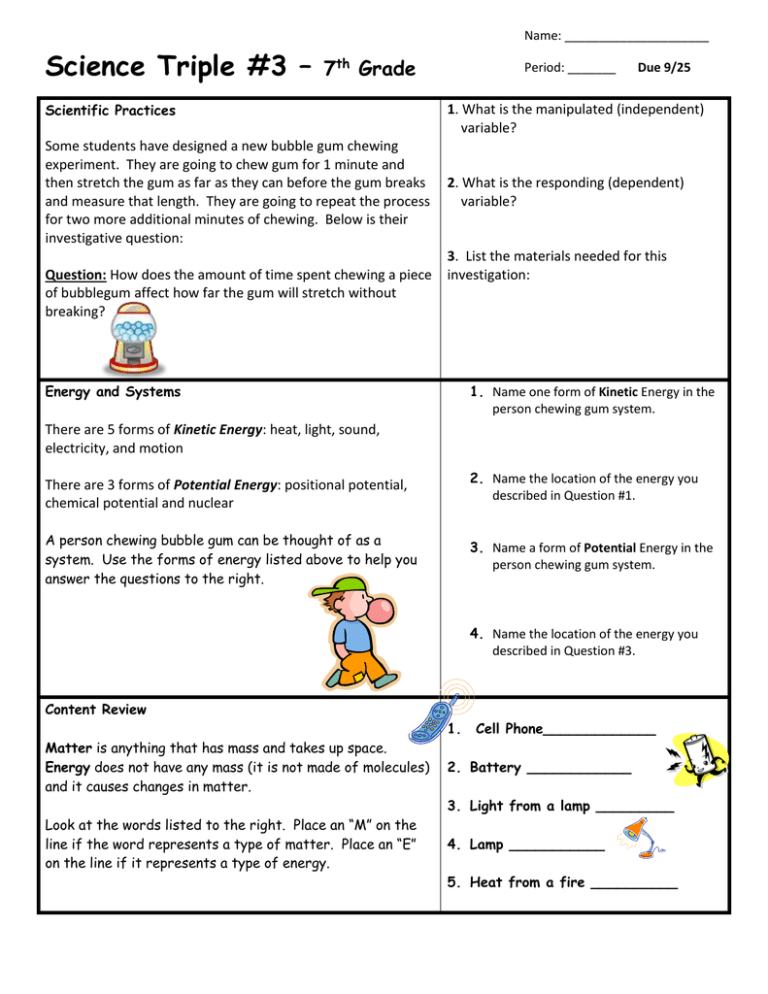
Name: _____________________ Science Triple #3 – 7th Grade Scientific Practices Some students have designed a new bubble gum chewing experiment. They are going to chew gum for 1 minute and then stretch the gum as far as they can before the gum breaks and measure that length. They are going to repeat the process for two more additional minutes of chewing. Below is their investigative question: Question: How does the amount of time spent chewing a piece of bubblegum affect how far the gum will stretch without breaking? Period: _______ Due 9/25 1. What is the manipulated (independent) variable? 2. What is the responding (dependent) variable? 3. List the materials needed for this investigation: Energy and Systems 1. Name one form of Kinetic Energy in the person chewing gum system. There are 5 forms of Kinetic Energy: heat, light, sound, electricity, and motion 2. Name the location of the energy you described in Question #1. There are 3 forms of Potential Energy: positional potential, chemical potential and nuclear A person chewing bubble gum can be thought of as a system. Use the forms of energy listed above to help you answer the questions to the right. 3. Name a form of Potential Energy in the person chewing gum system. 4. Name the location of the energy you described in Question #3. Content Review 1. Cell Phone_____________ Matter is anything that has mass and takes up space. Energy does not have any mass (it is not made of molecules) and it causes changes in matter. 2. Battery ____________ Look at the words listed to the right. Place an “M” on the line if the word represents a type of matter. Place an “E” on the line if it represents a type of energy. 4. Lamp ___________ 3. Light from a lamp _________ 5. Heat from a fire __________ By Tami Port, MS, Yahoo Contributor Network Jul 29 , 2009 Types of Scientists and What They Do Different Disciplines of Hard Science Have you ever thought about becoming a scientist? You are not alone! Science a tool; a special way of investigating a question. When scientists try to reveal the answers to questions about the world around us, they use a special process called the scientific method. The steps of the scientific method help ensure that bias-personal beliefs, hidden agendas, and just plain sloppy investigation-doesn't influence scientific results. Although the scientific method may not be a riveting topic for many, there are certainly many very cool scientific disciplines to study. When I went to school for my science Marking the Text Expectations degrees, my aim was to become a primatologist; a scientist, like Jane Goodall and the late Diane Fossey, who studies the biology and of behavior monkeys and apes; 1. Number the paragraphs as well as those well-known hairless apes, humans. 2. Circle key terms Hard Science and Soft Science 3. Underline claim(s) – at least one per paragraph Don't worry. If you are interested in becoming a scientist, but primates aren't your 4. For each question that you answer, reference the paragraph thing, there are plenty of other "-ologies" out there. Scientific disciplines are number where the answer was found divided into the "hard sciences" and the "soft sciences." Although the boundary between the two is not always distinct, the hard sciences are those disciplines that are more quantitative (based on measurement) and objective (less colored by personal belief). For example, psychology (the science of mental life) is considered a soft science, whereas neurology (the study of brain anatomy and function) is a hard science. Here is a brief glossary of the main branches of hard science, each of which contains many dozens of specific subdisciplines. Disciplines of Hard Science Astronomy: The study of matter in outer space, with emphasis on the positions, dimensions, distribution, motion, composition, energy, and evolution of celestial bodies and phenomena (like planets, stars, comets, galaxies, black holes, etc). Biology: The study of living organisms. There are many, many subdisciplines to this science, including cell biology, microbiology (microbes), zoology (animals), botany (plants), genetics (genes), immunology (the immune system), ecology (relationships between organisms and their environment), just to name a few. Chemistry: The science of matter; the branch of the natural sciences that deals with the composition of substances (atoms, molecules and compounds) and their properties and reactions. Geology: The science of the solid and liquid matter that makes up the Earth. Geology includes also several subdisciplines, such as climatology, vulcanology (volcanos), oceanography, paleontology (fossils), glaciology (glaciers), and gemology. Mathematics: This is a group of related sciences that use an abstract representational system to deal with the logic of quantity, shape and structure, and the relationship between these concepts. If you can count your fingers, you are doing simple mathematics, but the field is much more complicated than counting. Physics: The branch of science that pursues the study of properties and interactions of space, time, matter and energy. Can't make up your mind? Don't worry, there are also branches of science that are a mix of more than one discipline, such as Geochemistry, Biochemistry, Astrophysics and Geophysics. Whatever your interest, there is probably an “-ology” for you. 1. What is the difference between a “hard” branch of science and a “soft” branch of science? 2. What is Physics the study of?


